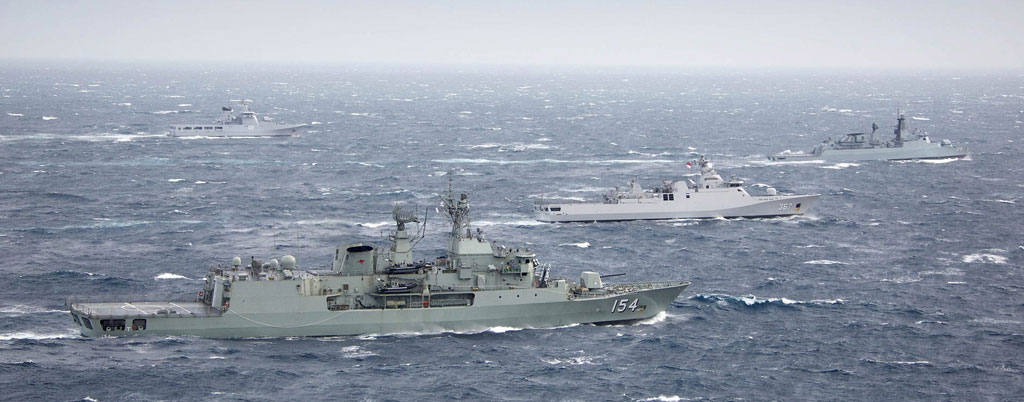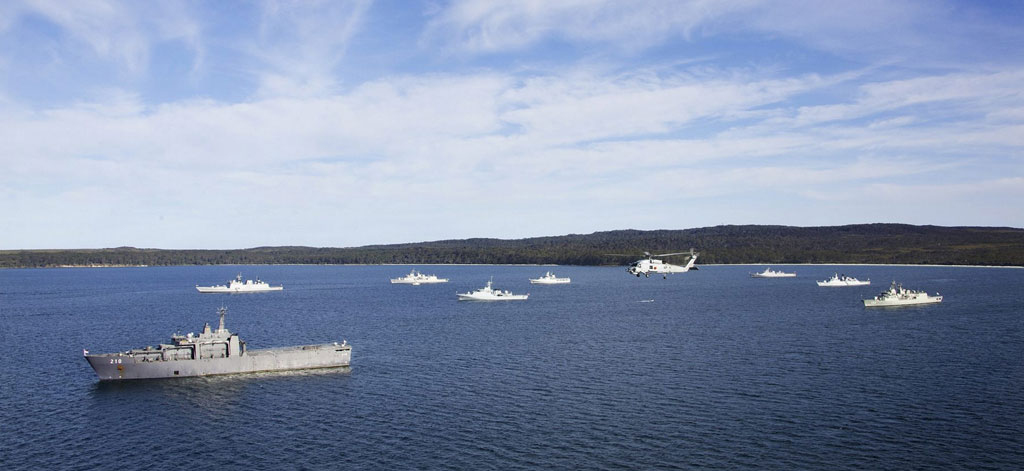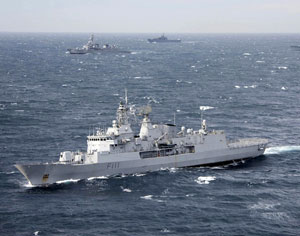
The Chief of the Royal Australian Navy, Vice Admiral Ray Griggs, has announced that the Navy will progressively change the color of its surface fleet to meet modern war-fighting and regional environmental conditions. The new ‘Haze Grey’ paint scheme uses reflecting pigments reducing the ship’s infrared signature. It also reduces external shipboard temperatures by up to 20 degrees Celsius, compared to the current ‘Storm Grey’ color.
While not normally apparent to the bystander, subtle differences in the grey color schemes used by various navies are adapted to meet regional environmental conditions, such as the percentage of cloud cover or sunlight. The recent International Fleet Review with 17 international ships visibly demonstrated that color schemes do vary significantly between nations.
The Royal Australian Navy has traditionally used the Storm Grey color based upon a traditional northern hemisphere ‘Light Grey’ which was developed to deter detection under overcast skies. That paint scheme was adopted in the 1950’s. With predominant sunlit conditions faced in Australian waters and significant improvements in paint technologies, the Chief of Navy decided to introduce a more appropriate paint scheme.
The revised scheme and new paint technologies were reviewed through extensive consultation with the Defence Science and Technology Organisation (DSTO) Maritime Group. The basis for the new scheme is around the regionally compatible Haze Grey colour, utilising new technologies in polysiloxane paints with Near Infrared Reflecting Pigments (NIRR).
Research has shown that the polysiloxane paints provide improved durability and fire resistance over older polyurethane systems. The use of reflecting pigments in the Haze Grey formulation reduces external shipboard temperatures by up to 20 degrees Celsius compared to the traditional Storm Grey. This contributes to decreased demand on shipboard environmental systems.
The scheme will be implemented by a phased introduction in scheduled maintenance periods and will yield operational improvements as well as reduce costs and improve technical performance.


















